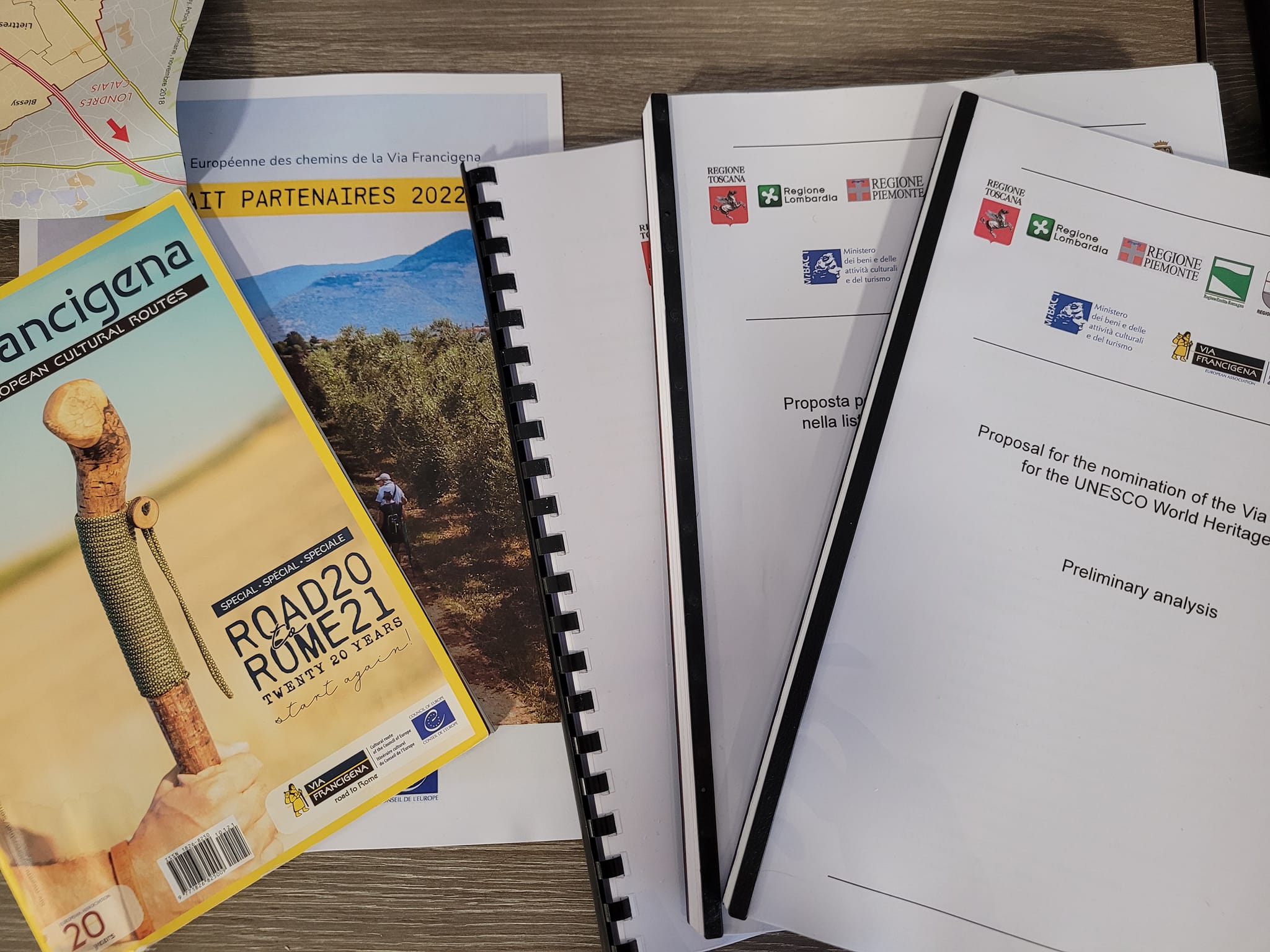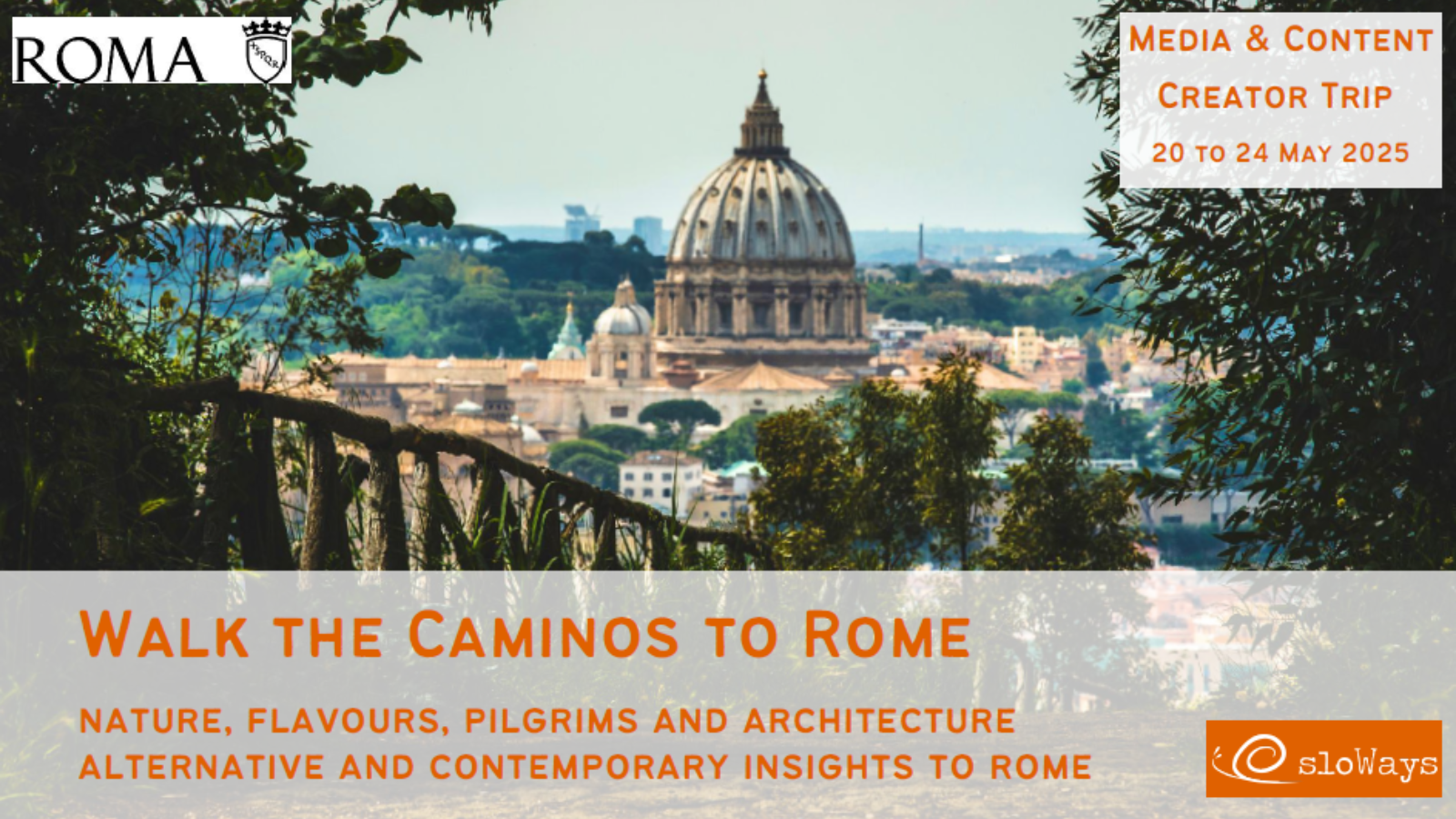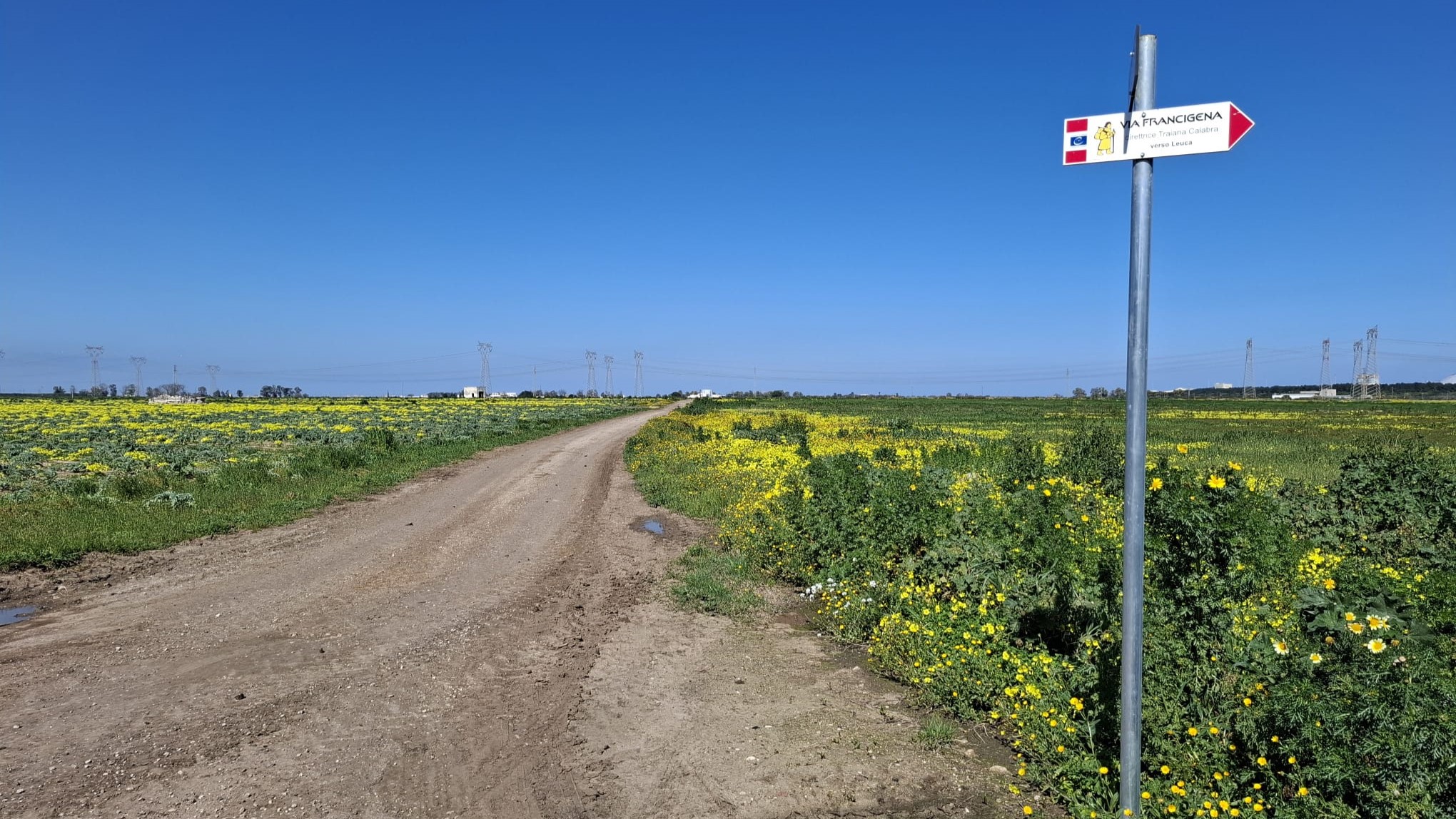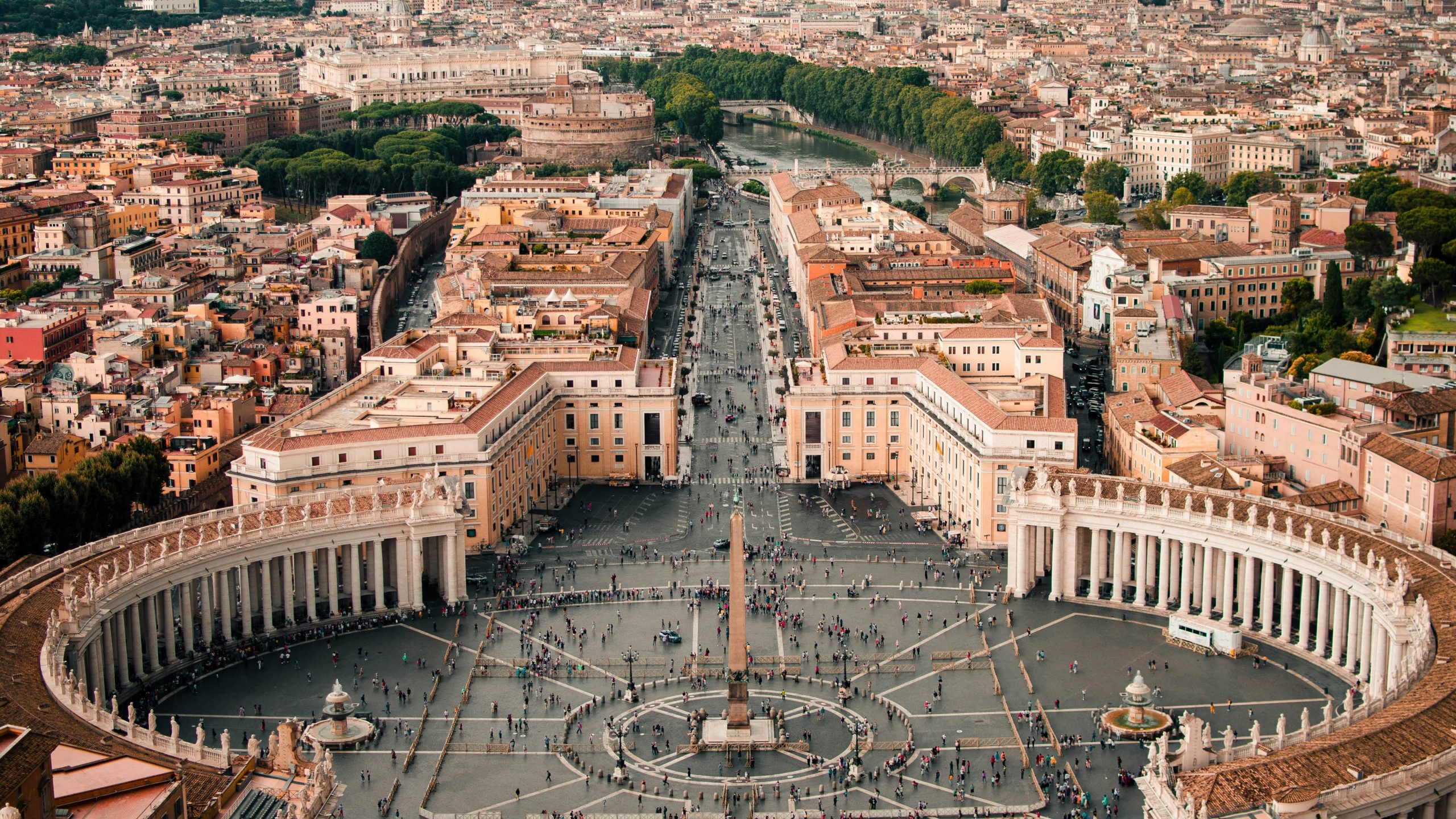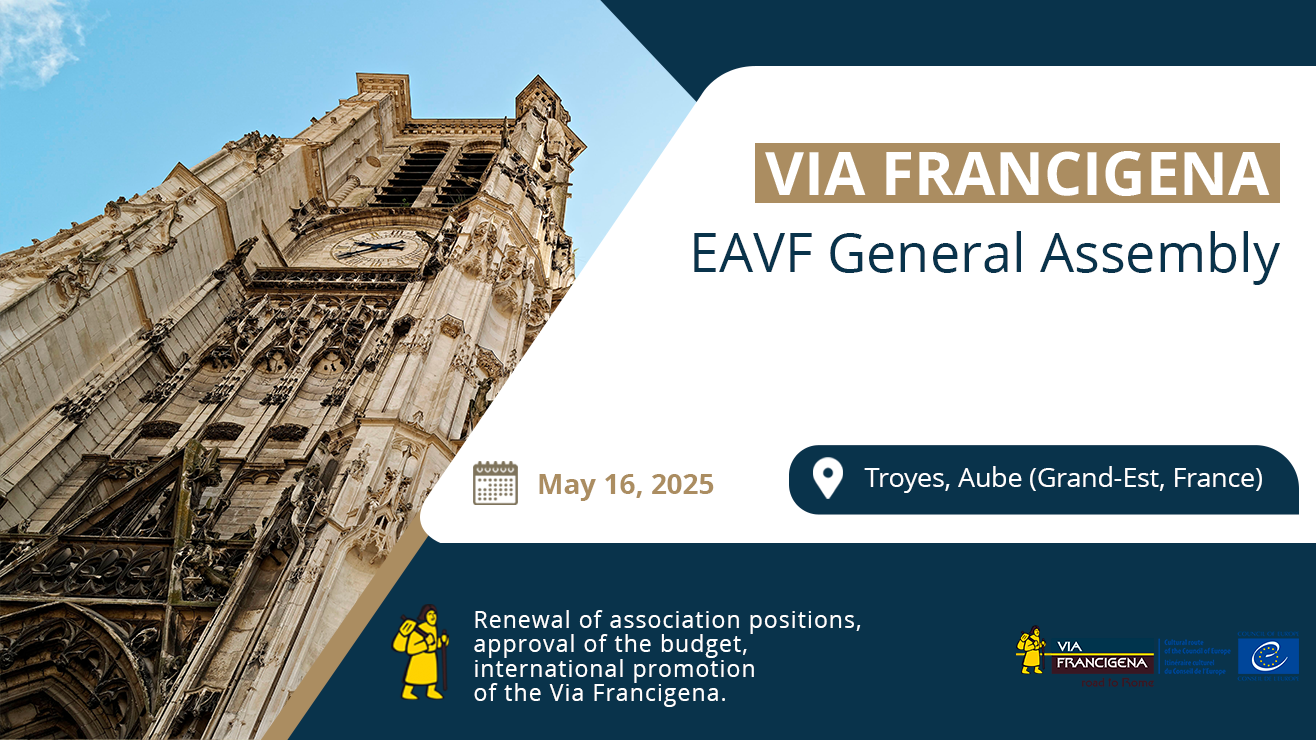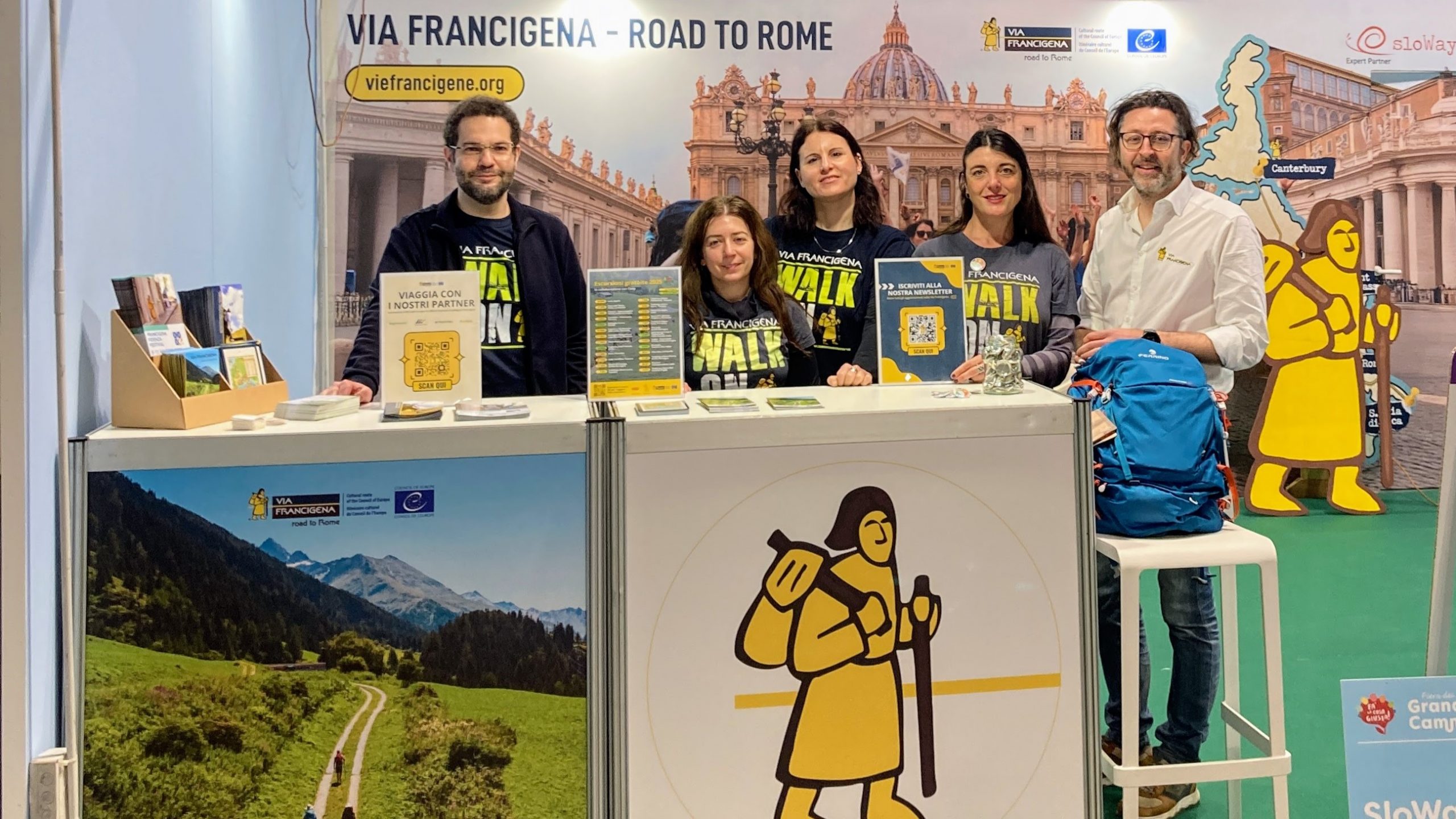The long walk “Via Francigena. Road to Rome 2021. Start again!”, which took place during summer 2021, celebrated the 20th anniversary of the EAVF. The event prompted the candidacy of the Via Francigena to join the UNESCO World Heritage List.
Good news finally arrives from France as well, as for the revival of the candidacy process. The letter of Calais’s Mayor Natacha Bouchart to the President of the French Republic Emmanuel Macron has a remarkable value.
The Via Francigena is a “Cultural Route of the Council of Europe” since 1994, hence it is part of the prestigious network of itineraries created in 1987 by the Council of Europe in Santiago de Compostela. Following such certification, in 2015, the Via Francigena network settled a second major objective for the route: its inscription in the UNESCO World Heritage List.
The starting point was the meeting on 15 June 2015, requested by the municipalities of Fidenza and Monteriggioni, which was attended by numerous representatives of municipalities and regions, but also of the Italian Ministry of Cultural Heritage. As a next step, the Italian Regions, coordinated by the Region of Tuscany, signed an important collaboration agreement on 4 March 2017 in San Miniato, which led to the drafting, in 2017, of the preliminary analysis of the UNESCO candidacy of the Italian section of the Via Francigena. In 2019, the thematic study of the entire European route, from Canterbury to Rome, had been prepared as well. The EAVF coordinated the technical and scientific work process of the two documents, which list the 540 eligible assets along the 2000-kilometre route, in accordance with criteria number 2, 4 and 6 of the UNESCO Regulations.
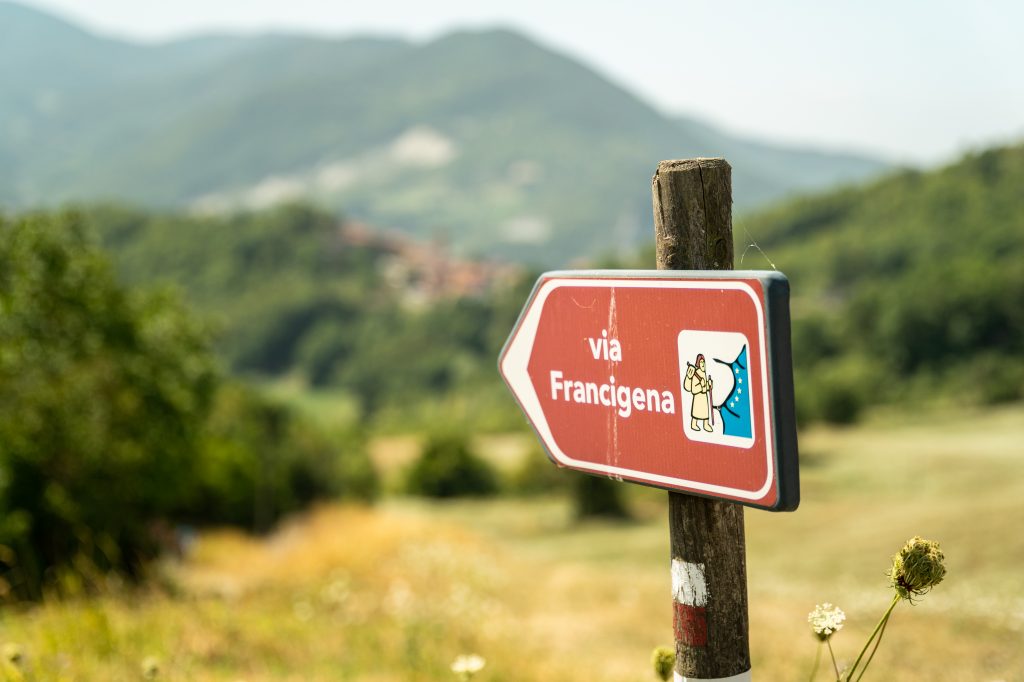
Four relevant events occurred during 2021:
- During the “Road to Rome 2021” march, between 15 June and 18 October 2021, the topic of the UNESCO candidacy was systematically mentioned in all meetings with local institutions and associations. Parliamentarians and local authorities mobilised with regards to the French section. In particular, on 14 June, the Council of the Union of Municipalities of Béthune-Bruay, Artois Lys Romane (Pas-de-Calais department; Hauts-de-France region) and the councils of the twenty municipalities of the Union crossed by Via Francigena unanimously voted a motion of support for the candidacy sent to the French Minister of Culture, Roselyne Bachelot. On 10 February 2021, the Minister and the Director General of Heritage and Architecture at the Ministry replied to all the letters received, assuring that the dossier was under examination in their offices.
- On 25 February 2021, the Council of the Region of Tuscany unanimously approved a council resolution committing the Region to the promotion of the UNESCO candidacy, in collaboration with the other Italian Regions and the EAVF.
- With decree no. 749 of 29 September, the Italian Ministry of Culture formally included within the Development and Cohesion Plan “Stralcio Cultura e Turismo CIPE” (FSC 2014-2020 ex delibera 3/2016) an allocation of 1.1 million euros for the UNESCO candidacy dossier of the Italian section of the Via Francigena.
The path towards the UNESCO candidacy has therefore been fully resumed and the Region of Tuscany, in collaboration with the EAVF, is organising a meeting in Florence in the coming weeks to overlook the current situation and ask for renewed consultation between the competent Ministries of United Kingdom, France, Switzerland, Italy and the Vatican State.
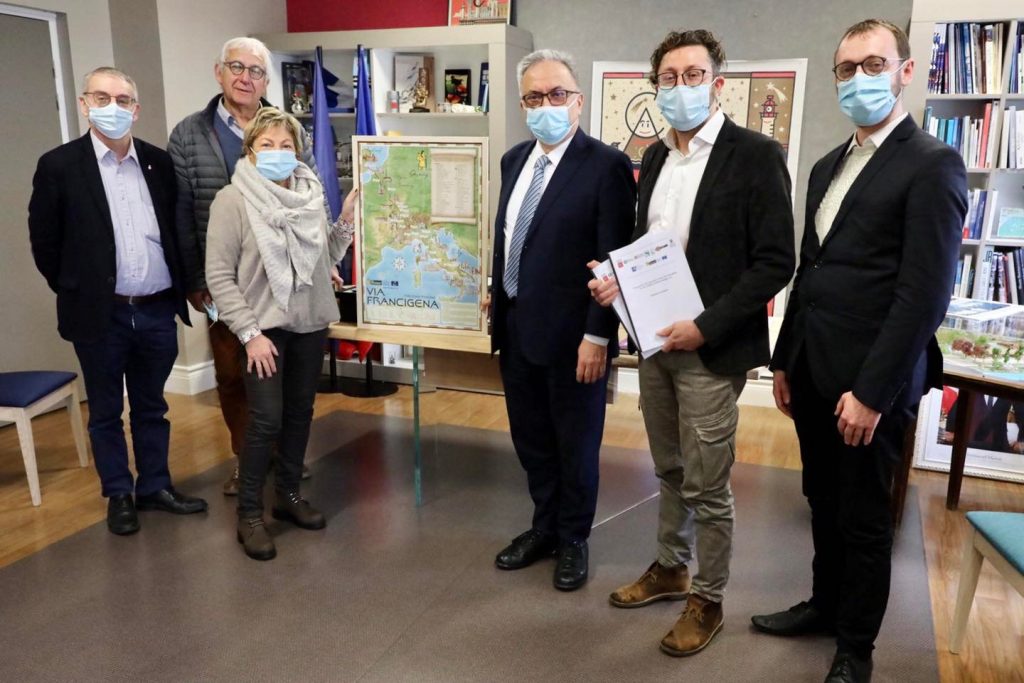
In the meantime, the EAVF continued its activities by organising five meetings with local administrations in the French section of the Via Francigena: Calais and Béthune (2 February), Bruay-la-Bussiere (3 February), Bar-sur-Aube (3 March), Wisques (4 March). Natacha Bouchart, mayor of Calais and vice-president of the Hauts-de-France Region, fully shared the common objectives of the project and gave a strong political impulse by directly involving the President of the Republic, Emmanuel Macron, to whom she sent the preliminary candidacy dossier asking for full support from the French Government.
“Since the great “Road to Rome 2021” march last year, I have noticed a renewed and widespread interest in the UNESCO candidacy of the Via Francigena. The meeting with mayor Natacha Bouchart and the interest of the President of the French Republic are very significant steps. Today we can say that the objective of presenting the candidacy proposal in conjunction with the 2025 Jubilee is realistic. The Via Francigena is a precious source of European heritage, and the UNESCO inscription would enhance it even more by bringing together public institutions, private individuals, associations and volunteers. We want to place the values and the tangible and intangible cultural value of this great European itinerary at the centre of the project”, commented Massimo Tedeschi, President of the EAVF.



